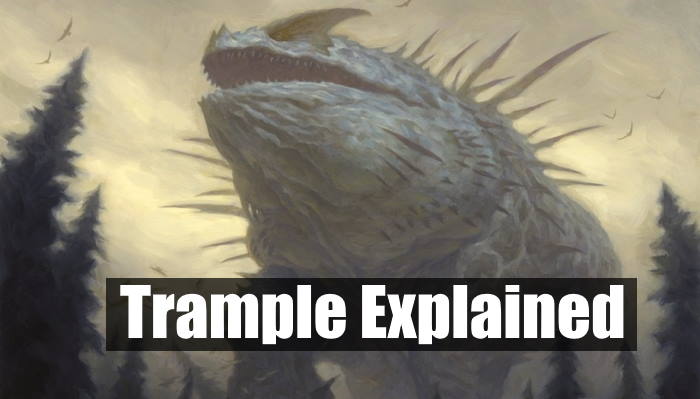In its 30 years of existence Magic: The Gathering has released a substantial amount of game mechanics. Some are very simple, others are exceptionally complex; Some are fan favorites and others get lots of hate. Today we will dive into one of the game’s oldest mechanics, Trample. As well as look at the best creatures with the ability. So, to start let’s look at a simple exploitation of what it is.
Trample means “This creature can deal excess combat damage to a player or planeswalker it’s attacking.” Usually, regardless of either creature’s power or toughness, once a creature is blocked it doesn’t deal any damage to whatever it was attacking. However, creatures with trample are able to deal the difference between their power and the blocker’s toughness to whatever they were attacking.
This basic explanation is pretty straightforward. Where it gets a bit more complicated is when you pair it with other effects or abilities that affect attacking, blocking, or dealing damage. Worry not though, if you’ve got questions we’ve got the answers. Let’s dive in.
Table Of Contents:
What Is Trample?
As mentioned above, the ability makes it so that the creature deals excess combat damage to a player or planeswalker it’s attacking. Usually, regardless of either creature’s power or toughness, once a creature is blocked it doesn’t deal any damage to whatever it was attacking. However, creatures with trample are able to deal the difference between their power and the blocker’s toughness to whatever they were attacking.
How Does It Work?
It works by letting creatures with the ability deal their excess combat damage to whatever they’re attacking even if they’re blocked. Meaning whatever damage exceeds the blocking creature’s toughness goes through to whatever you attack.
For example, let’s say you are being attacked by a Leatherback Baloth and you choose to block with a Memnite. Regardless of the discrepancy in power and toughness, once the Leatherback is declared as blocked, you receive no damage.
However, if the Leatherback were to have trample you’d take the three difference between the attacker’s power and the blockers toughness as damage even though you blocked.
Frequently Asked Questions
What Is Trample Damage?
“Trample Damage” refers to specifically the amount of excess damage that a player receives after blocks. So if a Colossal Dreadmaw is blocked by an Elite Vanguard the defending player takes five “Trample Damage”.
Does Trample Damage Work When Blocking?
No, it has no effect on how the creature blocks. It only deals excess damage to players when attacking. Here is a look at the official rules regarding this:
Related: MTG Blocking: How It Works
702.19a Trample is a static ability that modifies the rules for assigning an attacking creature’s combat damage. The ability has no effect when a creature with trample is blocking or is dealing noncombat damage.
Magic: The Gathering Rules
How Do You Block Trample?
As mentioned above, trample damage is the excess damage leftover after blocking. So, to effectively block the ability you would want to block with creatures that have high toughness. Another effective means to combat having excess damage is by blocking with multiple creatures. Just be sure you’re willing to trade a few creatures to avoid damage.
Does Trample Go Through Indestructible?
This is a common question with a simple answer. Indestructible itself has no effect on trample. A creature with trample only needs to deal damage in excess of the defending creature’s toughness; It doesn’t necessarily have to destroy it.
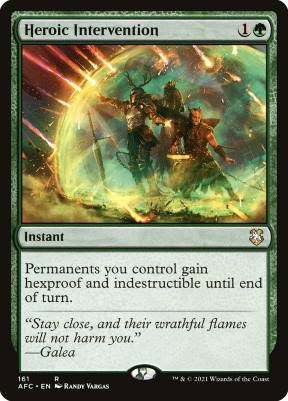
So, the answer ultimately depends on the indestructible creature’s toughness compared to the power of the creature in question. If there is any excess damage, it goes through to the attacked target just like normal, regardless of indestructible.
Does Prevent All Damage Stop Trample?
Preventing all damage would stop it, yes. The damage from a creature with trample including any excess damage that would be excess is still regular damage.
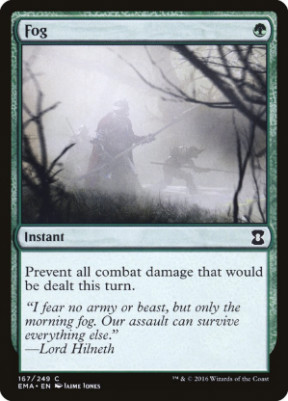
Therefore, preventing damage from a source with trample or all the damage for the turn it attacked would negate the damage like any other.
Does Deathtouch Stop Trample?
The answer to this common question is no. Deathtouch does not stop trample damage. Deathtouch makes any amount of damage that a creature with deathtouch deals lethal, regardless of the toughness of the defending creature.
Related: Deathtouch: How It Works And What It Does
So it will likely kill the creature that it is blocking. However, it doesn’t affect the trample damage at all. So, any excess damage would go through to the intended attack target just like usual.
While we’re on the topic, these two abilities work quite well together from an offensive point of view. If an attacker has both abilities, the first point of damage it deals to a blocker is lethal (thanks to Deathtouch) and this means all the remaining damage is excess damage and will carry through to the intended target.
Does First Strike Stop Trample?
It can, if the attacking creature doesn’t survive the first strike damage it received. Creatures with first strike get to deal damage before other creatures. Therefore, if a creature with trample receives lethal first strike damage it would not be around to deal any damage of its own.
As an example, let’s say a player is blocking a Lightning Skelemental with a Boros Recruit. In the first strike damage phase the Recruit deals one damage to the Skelemental, (keep in mind that creatures without first strike deal no damage here) which is lethal damage. Therefore, the Skelemental dies before the regular combat damage step where it would deal its damage.
Does Trample Go through Planeswalkers?
This is one of the more complex issues that comes up. For clarity, what people mean by this question is “If I attack a planeswalker with a creature with trample, and deal more damage to it than it has loyalty counters, does the excess damage go to that planeswalker’s controller?”
Not “If I attempt to attack a planeswalker with a creature with trample and my opponent blocks it, does the excess damage dealt to the creature go through the creature to the planeswalker.”
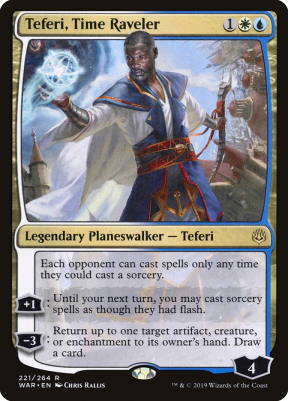
The general answer to the first question is, no. A creature with trample does not “trample through” a planeswalker and deal damage to the planeswalker’s controller. This is because planeswalkers generally can’t block. However, there are a few things that can complicate this. Let’s take a look at a few variables.
Related: Battle for Baldur’s Gate Commander Precons: Everything You Need to Know
First, in situations where a planeswalker becomes a creature who is blocking a creature with trample, all the regular rules mentioned above apply. So, a planeswalker equipped with Luxior, Giada’s Gift could be “trampled through” like usual.
Next, the card Thrasta, Tempest’s Roar is an exception to the rule, as it specifies “This creature can deal excess combat damage to the controller of the planeswalker it’s attacking.”
How To Beat It?
That said, the most effective way to beat it is to play an adequate amount of removal or interaction in your decks.
This is a broad category of spells but includes things like creature removal (Go For The Throat), counterspells (Syncopate), bounce spells (Vapor Snap, and hand disruption (Agonizing Remorse). All of these things can help you answer aggressive creatures and other threats as well.
Trample is a mechanic that comes on creatures and changes the way they deal damage when attacking. This means that cards like Propaganda, Ghostly Prison, and Ensnaring Bridge can work well if your deck can support them.
Lastly, creatures with high toughness are your friend. Cards like Wall of Omens and Wall of Blossoms can offer some great card advantage while helping to stop damage from getting through to you. If you’re looking for a strategy with these types of creatures consider building a High Alert deck.
Deck Lists
Here is an EDH deck built around the mechanic.
Stonebrow, Krosan Hero
This Gruul deck hit hards and can throw tons of damage at opponents. Stonebrow, Krosan Hero can be cast from the command zone and immidently generate a huge buff for the deck. I really like commanders that don’t have to survive a rotation of the table to do something and Stonebrow is great in that department.
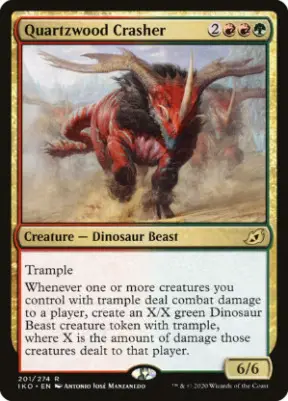
I have 22 Trampling creatures in the deck as well as Archetype of Aggression and Garruk’s Uprising to grant the abilty to our few utility creatures that don’t have it naturally, so the deck knows exactly what it wants to be doing. One of my favorite creatures in the deck is Stonecoil Serpent. It’s an early game play, a late game bomb, blocks flyers, and has some bulit in protection.
The win condition here is turning creatures sideways and attacking and there are a few cards to help get the job done. First, we have Proud Wildbonder. If he stays alive for even a few turns, your opponents will probably be dead in a few turns. Especially when paired with any of the following:
Speaking of Aggravated Assualt, the deck features a combo for Infinite combat phases with it and Sword of Feast and famine. Here’s how it works if you’re unfamiliar. Once you have both on the battlefield with at least five mana (at least two red) you have to deal combat damage to a player with a creature equipped with the sword.
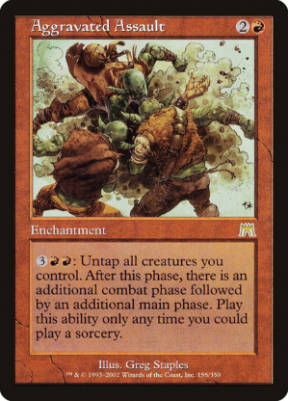
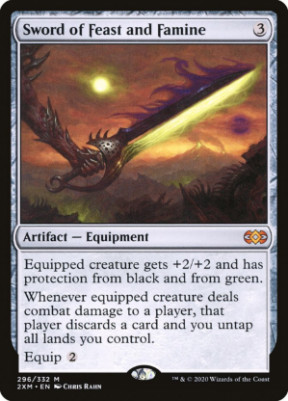
When this happens, you’ll get to untap all lands you control thanks to the sword trigger. Then you’ll have the mana to activate Aggravated Assult which will untap your creatures and gaive you an additional combat phase. You can then repeat this over and over so long as an opponent can’t stop your equiped creature from attacking/dealing damage.
If you enjoy ramp, big creatures, combat/attacking, efficent removal and Trampling through for damage this one is for you.
Best Creatures
We’ve covered just about all there is to cover about the ability and how it works. So, what better way to end the article than with a Top 5 list of the best creatures with trample? Let’s take a look.
5. Hydroid Krasis
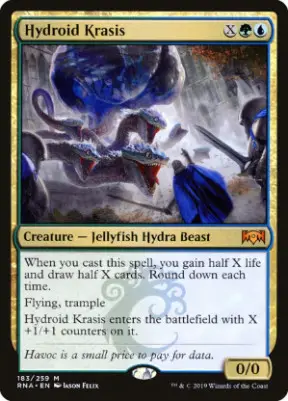
Hydroid Krasis was an all-star in its run-through Standard. While it hasn’t seen much play since rotating from standard, it is still a dream come true for midrange strategies. Its keyword abilities make it an excellent late-game finisher. While the x in its casting cost and its ability to draw cards and gain life make it equally as valuable in the early game.
This versatility and ability to help stabilize early and get damage through in the air late make it a potent threat at any stage of the game.
4. Seige Rhino
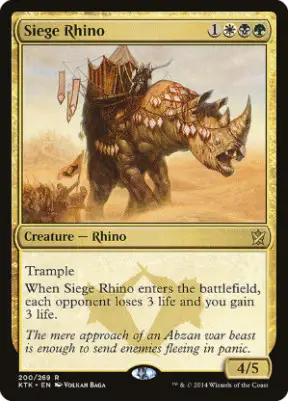
Siege Rhino is a pretty massive threat that comes with a free Lightning Helix attached to it. This means that just entering the battlefield causes a six-point life swing. After which, an opponent is still staring down a 5/4 body with trample.
The effect the Rhino has on a game by simply resolving is quite huge. The trample here makes a big difference, as not only has the opponent taken damage from the ETB trigger but is sure to take even more if it isn’t removed quickly.
3. Emrakul, The Promised End
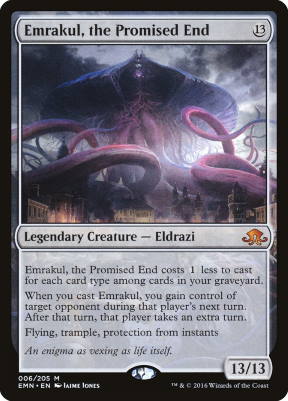
Emrakul has quite a bit that makes her a beast. First, her ability to reduce her own cost is quite effective and it’s not uncommon to be able to cast her for around six mana. Next, evasion and protection from instants make her incredibly hard to remove or block effectively.
Then you have her massive cast trigger. Controlling an opponent for a turn is not only incredibly unique and fun but is also exceedingly brutal. Granted they do get another turn afterward. However, the damage done by controlling your opponent for a turn is often too much to come back from.
While trample is only one piece of the puzzle here, it helps a lot in boosting her lethality since opponents can’t simply chump block with small flyers. This is a huge upside for decks that forgo the cast trigger and cheat emrakul into play.
2. Reality Smasher
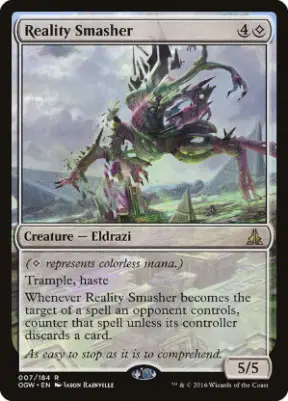
Our next card also happens to be an Eldrazi. Reality Smasher is quite aggressive at a five-mana 5/5 with multiple keyword abilities. Furthermore, it also comes with the upside of being able to protect itself quite well. If an opponent wants to remove it, it’s almost always going to be a two-for-one situation for you.
Couple this aggression, evasion, and resiliency with ramp such as Eldrazi Temple, and Reality Smasher becomes a very quick clock if left unanswered. There is a very good reason the card has seen success in a variety of formats.
1. Primeval Titan
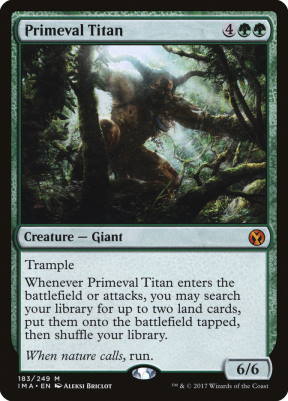
If you played in Standard at the time of its release or have played in Modern since then, you already know how good “Prime Time” is. For those fortunate enough to have not crossed paths with it, let me enlighten you.
Prime Time is six mana 6/6 that tutors any two lands in your deck to the battlefield when it enters the battlefield or attacks. Who knew a giant trampling creature who gets you two extra lands per turn would be good?
Where the card really shines is when it is ramped out early and its land triggers are abused. For example, when played alongside Amulet of Vigor the lands the titan grabs will enter untapped. Not only does this lead to having an incredible amount of mana available but can also enable one-shot kills by grabbing things like Sunhome, Fortress of the Legion, and Slayers’ Stronghold in Modern.
End Step
Magic: The Gathering is a very complex game, to say the least. The way the game’s numerous abilities interact with each other can lead to some quite complicated situations in gameplay. That said, I hope that you have found today’s article of use in answering whatever questions you may have had regarding one of the game’s most aggressive mechanics. Until next time, keep turning those creatures sideways and trampling over opponents.
